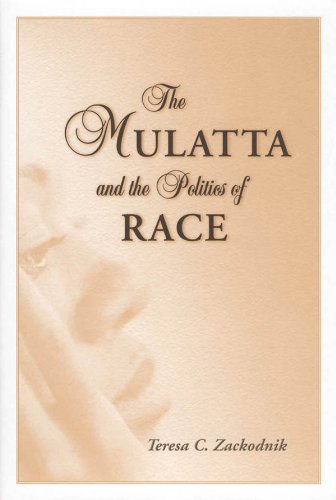Beyond the Pale: Unsettling “Race” and Womanhood in the Novels of Harper, Hopkins, Fauset and LarsenPosted in Dissertations, Law, Literary/Artistic Criticism, Media Archive, Passing, United States on 2012-03-28 01:44Z by Steven |
Beyond the Pale: Unsettling “Race” and Womanhood in the Novels of Harper, Hopkins, Fauset and Larsen
McMaster University, Hamilton, Ontario, Canada
December 1996
303 pages
Teresa Christine Zackodnik, Professor of English
University of Alberta, Canada
A thesis Submitted to the School of Graduate Studies in Partial Fulfilment of the Requirements for the Degree Doctor Of Philosophy
This dissertation proposes that writers like Frances Harper, Pauline Hopkins, Jessie Fauset, and Nella Larsen “talk out both sides” of their mouths, parodying the values of the black bourgeoisie, racialized notions of womanhood, and understandings of racial difference popular at the turn into the twentieth century. Using complex modes of address, these authors have written novels that in all likelihood were read in different directions by their white and African American readerships. I contend that these narratives would have placated their white readership with familiar forms, while simultaneously forging a sense of community with their African American readers in novels of a highly political nature which questioned and subverted definitions of womanhood and “race”. These “tragic mulatta” and “passing” novels, published from 1892 to 1931 are contextualized with an analysis of three cultural efforts to consolidate turn-of-the-century American beliefs regarding race and gender: legal statutes codifying racial identities, theories of racial difference, and notions of gender identity disseminated through the cult of domesticity. Because the mulatto is neither white nor black, her ambivalent identity and experience make parody a significant trope with which these authors interrogate identity. In order to “pass” for “true women” or for white, these mulatto characters utilize and parody the very qualities designed to ensure the “purity” of whiteness and womanhood. This study argues that such parodies access an African American tradition of parodic performance that played to and on white notions of “blackness” and constructions of white identity. Moving from a consideration of such “signifyin(g)” acts as a challenge to gender and racial identities represented by heroines who pass for “true women,” the study concludes with a consideration of how race, as a political category of description, is destabilized through the representation of heroines who choose to pass for white.
TABLE OF CONTENTS
- CHAPTER 1: Codifying and Quantifying “Race” in Turn-of-the-Century America
- CHAPTER 2: Unsettling “Race” and Womanhood in Tum-of-the-Century America: Frances Harper’s Iola Leroy and Pauline Hopkins’s Contending Forces
- CHAPTER 3: Policing the Bounds of Race: Jessie Fauset’s The Chinaberry Tree and Nella Larsen’s Quicksand
- CHAPTER 4: Transgressions and Excess: Passing as Parodic Performance in Jessie Fauset’s Plum Bun and Nella Larsen’s Passing
- CONCLUSION: New Trajectories of Self-Definition
Read the entire thesis here.
